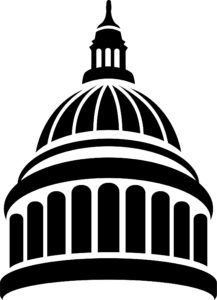Pushing for better access to Democracy
Washington State Senate Republicans pioneered remote testimony in the Washington State Legislature. We have worked diligently over several legislative sessions to push both chambers of the Legislature — House and Senate — to remote technology. Sen. Mike Padden led the way.
With the shutdowns and other safety measures used during the COVID-19 pandemic, remote testimony became critical to the daily operations of the Washington State Legislature. Committee hearings, meetings with constituents and lobbyists, and even remote floor action and voting allowed us to continue our work while so many were concerned with their safety.
While this is definitely a giant leap forward in the adoption of the technology required to do conduct the Legislature’s business remotely, it’s also been a crutch for the majority — a crutch that has allowed them to brag about6 the level of citizen engagement in the democratic process while the quality of that engagement undermined the impact citizens can have on the legislative process.
‘That rhythm is gone.’: Washington State legislators on the pros and cons of virtual government
More people could testify — that’s true. It’s also true that people could testify from anywhere and didn’t need to travel to Olympia to have their voices heard. Greater participation is why we’ve pushed so hard for the remote testimony option. Unfortunately, depending ENTIRELY on remote testimony had a negative effect on Democracy in Washington.
- People were often limited by committee chairs to one minute or less for testimony.
- People were cut off by the committee chairs when their time was up. Some were in the middle of a sentence. Some were in tears and struggled to get their words out in the short time limit.
- The impact of the sheer numbers of people wanting to testify was nonexistent. Gone were overwhelming and influential demonstrations either for or against bills being heard.
- People could not attend floor action in person, giving less transparency to the legislative process.
Many were left with the feeling that hearing public testimony was nothing more than a box the committee chairs had to check and that it gave them an opportunity to shut out voices they didn’t want to hear. Still more people found the process rude and alienating because they couldn’t appear in person and make a connection with the committee members or the audience.
Remote testimony is a critical piece of legislative operations, but it should not be the prime method of legislative operations. It becomes too much of a good thing.
Constituents need to be able to meet face-to-face with their legislators and the public should be able to peaceably assemble in large numbers to show the level of concern or support in a way remote testimony simply can’t capture. Two hundred people crammed in hearing room makes more of an impression on legislators than a report that simply says 200 people wanted to testify. We need to be less detached from the democratic process here in Washington.









